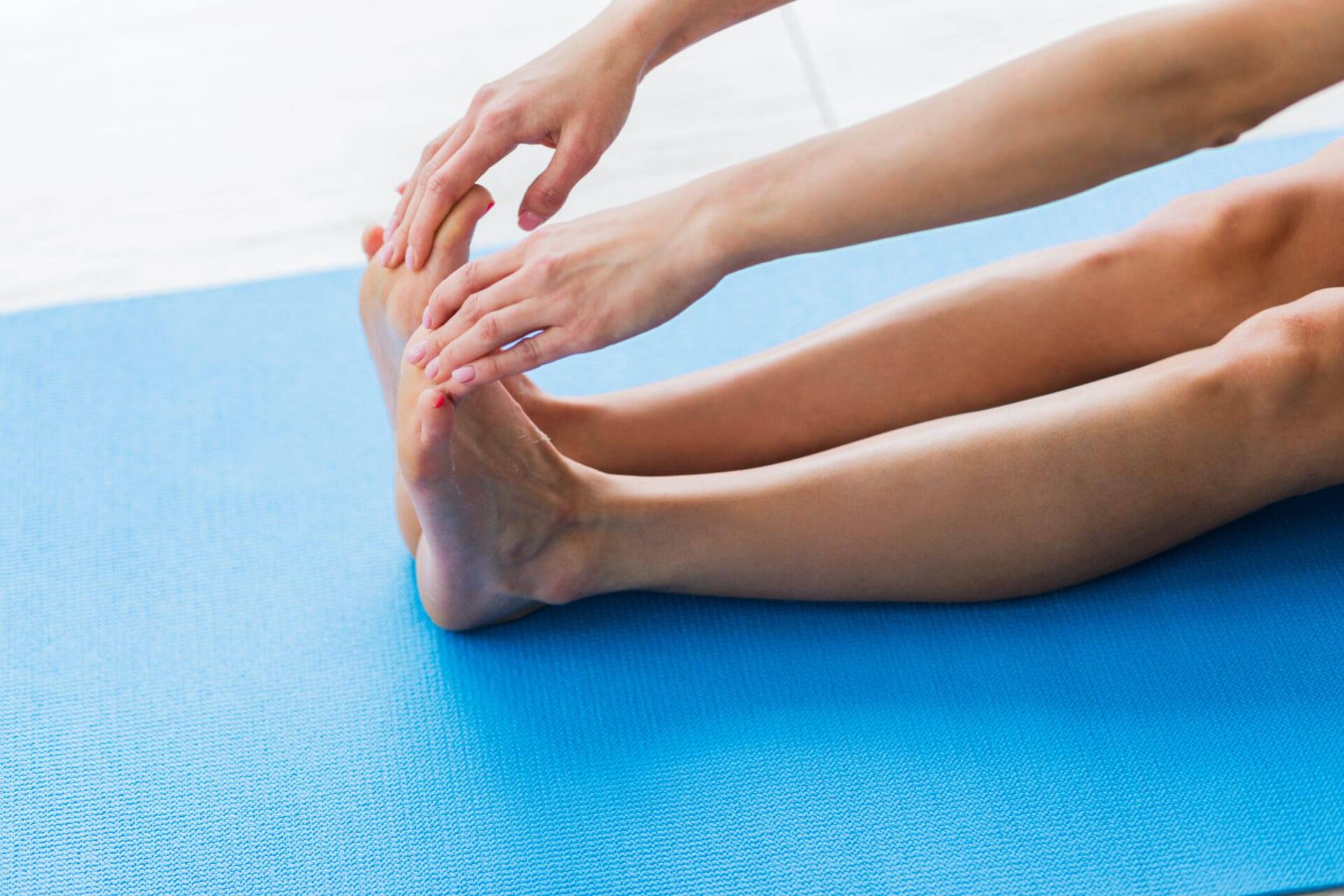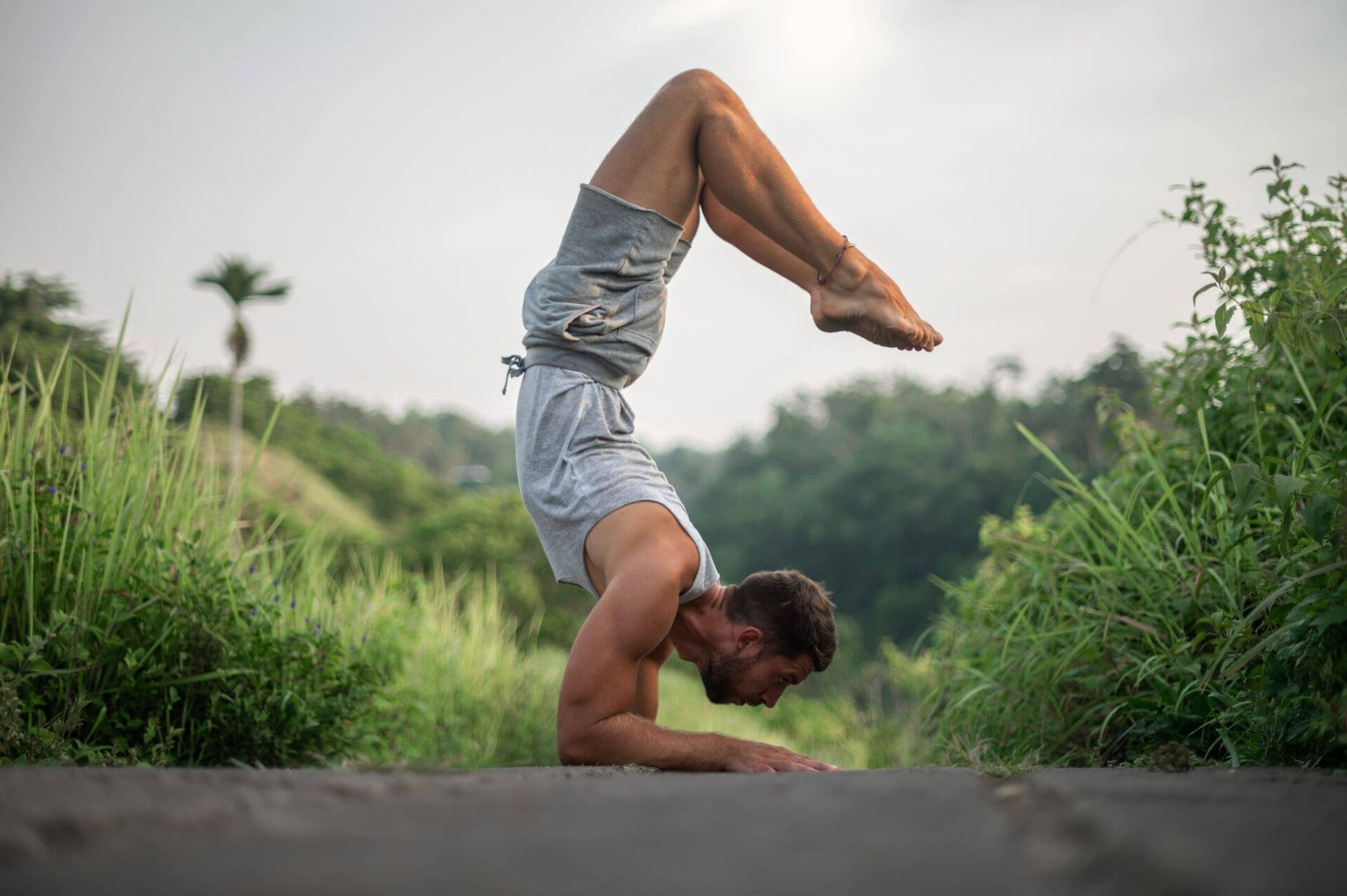By Dr. Richard Thompson

Static stretches are stretches that elongate the tissue from end to end and are held for a period of time, anywhere from 20 seconds to as long as 2 minutes. An example of this would be a hamstring stretch where you are sitting on the floor with one leg straight out at a 45º angle, and you lean and reach towards the foot of that leg. These stretches are typically best performed after your tissues are considered warm. A warm tissue means the tissues (primarily the muscles, fascia, or connective tissues, ligaments, and joint capsules) have ample blood flow going through them, which allows for an increase in temperature and subsequent elasticity of the tissues. Simple ways you can ‘warm up’ tissues are through light exercise or by applying heat, such as a hot shower. Stretching tissues immediately after waking up in the morning is discouraged for the most part, as your tissues are considered ‘cold’. As you sleep through the night, blood flow gets directed to your organs, since you aren’t using your musculoskeletal system to move around. If you want to safely stretch in the morning, make sure you’re up and about for at least 30 minutes, or you’ve had a hot shower or bath, before going through your static stretching routine.
Static stretching is also best performed after physical activity, not only for the effectiveness and safety described above, but also because performing static stretching before physical activity has been found to reduce physical performance. Muscle tissue elasticity and rebound potential is decreased, meaning that you may see a loss of explosiveness, power, and speed for the particular sport or activity you perform. Stretching prior to physical activity, especially competitive sports, should be more dynamic in nature.


- How often should I stretch? Stretching can be performed several times a day, but one thing to consider is that once you’ve gone through your static stretching routine, you’re done for now. There’s no magic frequency or volume of stretching to be completed throughout the day. If you are recovering from injury, stretching helps with healing and function (at the appropriate phase of treatment/healing) as part of your overall home care routine, but it’s not the be all and end all, and won’t heal your injury overnight.
- Should stretching hurt? The simple answer is, no. Static stretching can cause a bit of discomfort, which I would rate at no higher than a 3 out of 10 pain scale (10 being the worst pain you have ever experienced). If you would rate the discomfort or pain at 4 or higher, it is not encouraged to stretch to that extent or to avoid the stretch all together. Stretching should induce tension, so that you know you are promoting mobility in the tissues, but should not cause pain.
- How long do I hold the stretch for? My typical recommendation for holding a stretch is roughly 30 seconds per static stretch. That being said, this can differ from patient to patient and from condition to condition. For example, plantar fasciitis, which is pain and inflammation of the tissues under your midfoot and heel, is an injury that involves very dense connective tissues. These tissues are slow to stretch, so prolonging the length of time you are holding the stretch will maximize the results. I often recommend plantar fasciitis patients to hold their foot stretching for 1-2 minutes. This stretch is also one of the few stretches I recommend doing first thing in the morning, as the risk of injury to these tissues when they are cold is negligible, and the stretch drastically reduces the irritation of fascia once you put your body weight onto your feet.
- Should I stretch immediately after injury? There’s no absolute answer to this question, but my recommendation is that stretching should not be performed immediately after injury if tissues are inflamed and/or damaged. This would cause a ‘pulling’ of these tissues and will only further aggravate the injury site. As the patient, it’s not easy to know if this is the case – so here’s what you should consider. If you’re experiencing pain or have a known injury, and stretching is either painful during or after stretching, or if your pain is not improving after two or three days, then it’s possible that the stretching is not beneficial or warranted, yet. Consider ice therapy and relative rest for a few days to help reduce inflammation, and then try resuming your stretching to see how things respond.


